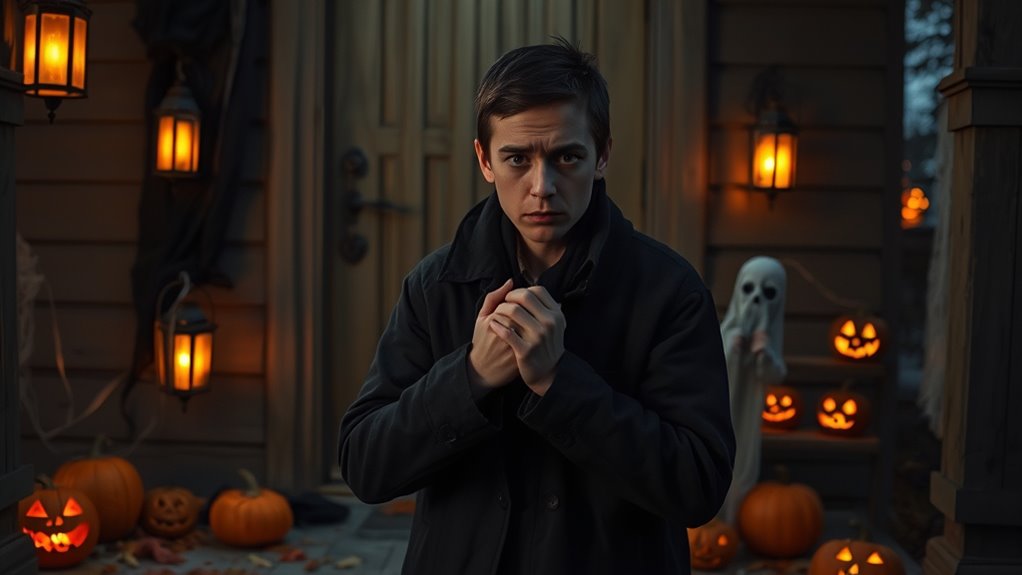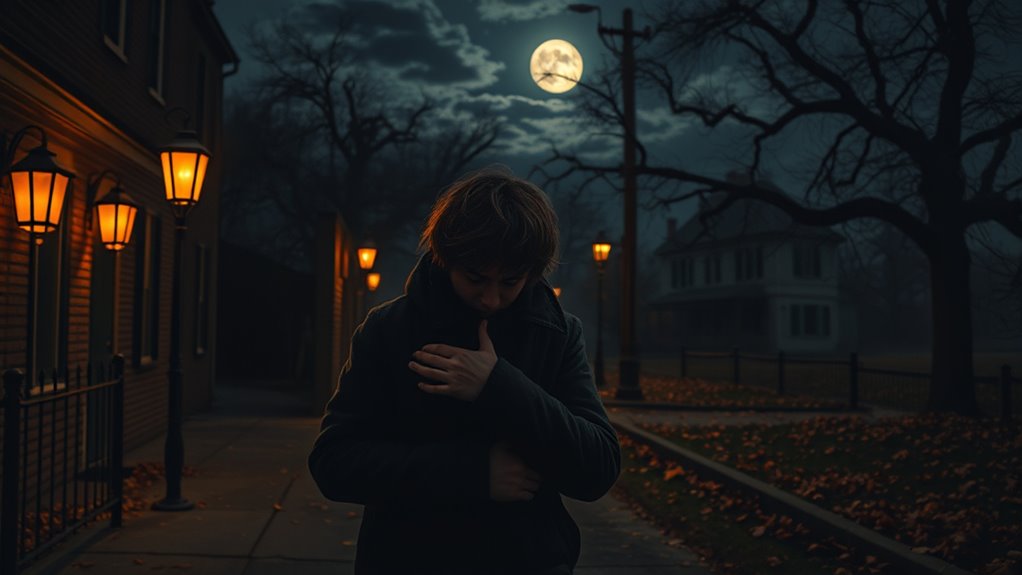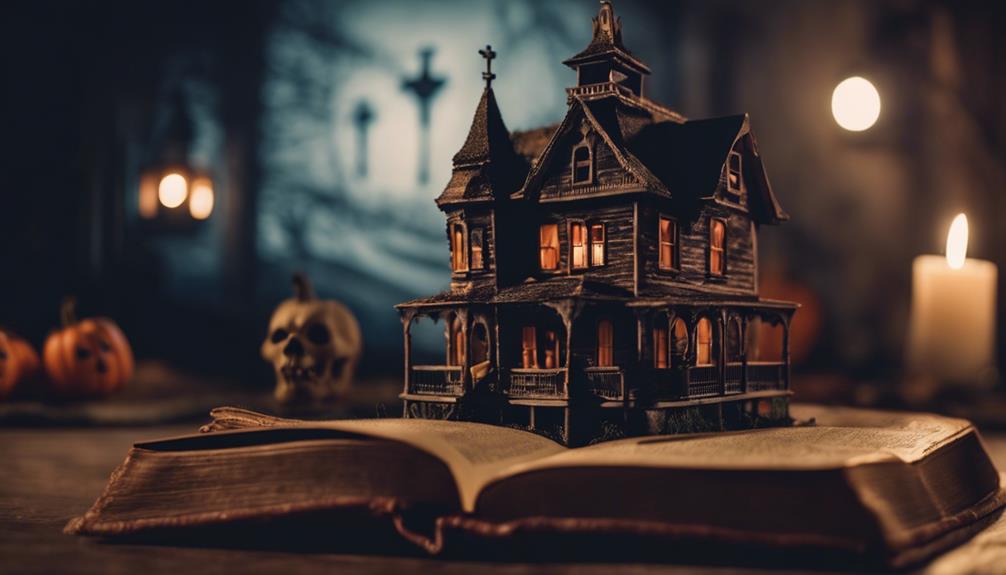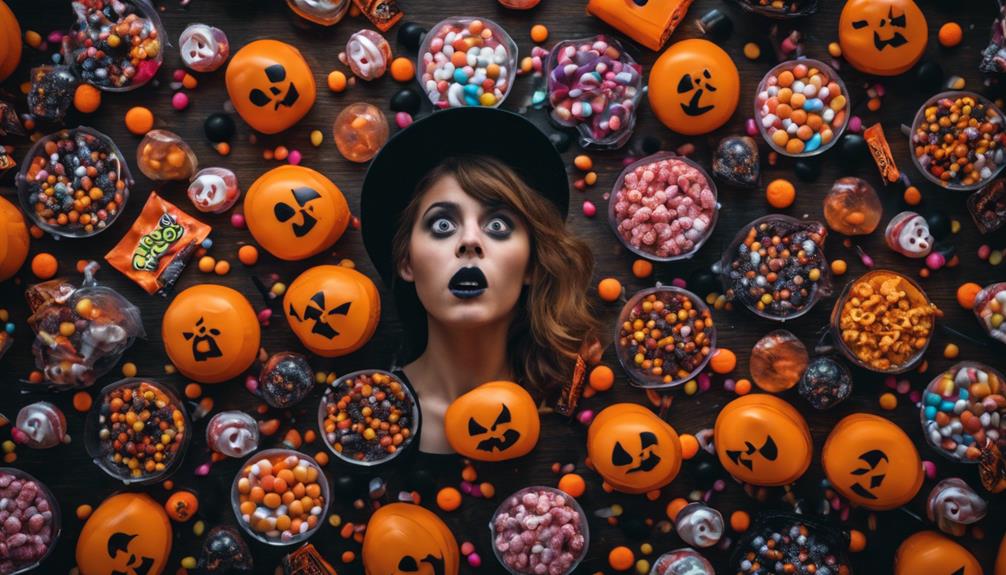Samhainophobia is the fear of Halloween and its symbols, rooted in ancient Celtic traditions where costumes were worn to ward off spirits. This fear can cause intense discomfort, leading you to avoid celebrations or experience anxiety during the holiday. Your subconscious might associate costumes with ghosts or danger, triggering feelings of chaos or threat. Understanding these roots can help you manage your fear better—keep going to uncover more about this intriguing phobia.
Key Takeaways
- Samhainophobia is an intense fear or anxiety related to Halloween and its symbols, often causing avoidance or distress.
- It stems from historical Celtic traditions where costumes and disguises were used to ward off spirits.
- Costumes can trigger subconscious fears linked to death, danger, or the supernatural, intensifying anxiety.
- The cultural symbolism of costumes as representations of chaos or threats persists, influencing fear responses.
- Understanding the historical and cultural roots of Halloween can help manage and reduce Samhainophobia symptoms.

Have you ever felt uneasy or anxious at the thought of Halloween? You’re not alone. For some people, the holiday triggers intense fear or discomfort, and that’s where Samhainophobia comes into play. To understand this fear better, it’s helpful to look at the history of costumes and their psychological effects. Halloween costumes have been around for centuries, originally rooted in ancient Celtic traditions. During the festival of Samhain, people dressed in disguises to ward off spirits or to hide from them. Over time, costumes evolved from simple masks and animal skins to elaborate outfits representing ghosts, monsters, and other supernatural beings. This long-standing tradition of disguises may contribute to the psychological effects experienced by some individuals today. When you see someone dressed as a ghoul or witch, it can trigger subconscious associations with death, the unknown, or danger, intensifying feelings of fear. For those with Samhainophobia, these costumes aren’t just playful—they become symbols of chaos or threat, amplifying anxiety rather than providing fun. Moreover, the cultural storytelling surrounding spirits and the supernatural further reinforces these fears. The psychological effects tied to Halloween costumes can be significant. When you’re exposed to images or encounters of masked figures, your brain might interpret these as reminders of past fears or cultural stories about spirits and the supernatural. This can lead to heightened alertness, increased heart rate, and a sense of dread. For some, the fear isn’t just about the costumes but about what they represent—uncertainty, the boundary between life and death, or the idea of hidden threats lurking behind a mask. These associations can trigger phobias that cause you to avoid Halloween celebrations altogether or experience distress during the holiday season. The more you associate costumes with fear, the more intense your psychological response becomes, creating a cycle of anxiety that’s tough to break. Understanding the history of costumes helps explain why this fear persists. It wasn’t just about dressing up for fun; it was about confronting or warding off spirits and unknown forces, which could be frightening. Today, even though most costumes are meant for entertainment, the underlying symbolism can still evoke those primal fears. If you’re prone to anxiety around Halloween, recognizing how the tradition’s roots influence your feelings can be empowering. It allows you to see that your fear isn’t purely irrational but connected to centuries of cultural storytelling and subconscious cues. Essential oils, like lavender or eucalyptus, may help calm your mind and ease anxiety as part of relaxation techniques. With awareness, you can take steps to manage your response, reminding yourself that modern costumes are just costumes—not threats. Understanding the history and psychological effects behind Halloween costumes can help you face your fears with more clarity and control.
Frequently Asked Questions
Can Samhainophobia Develop Suddenly or Only Over Time?
You might wonder if Samhainophobia can develop suddenly or only through gradual development. It’s possible for this fear to have a sudden onset, especially if you experience a traumatic Halloween event or encounter something that triggers intense anxiety. However, for many, it develops gradually over time as negative associations build. Both patterns are common, and understanding your own fear’s progression can help you address it effectively.
Are There Specific Symptoms That Distinguish Samhainophobia From General Halloween Fear?
Imagine feeling a sudden chill every October 31st, like a shadow creeping unexpectedly—that’s how specific symptoms of samhainophobia differ. It involves intense fear, rapid heartbeat, and avoidance of Halloween activities, often triggered by visual cues or cultural associations. Unlike general Halloween discomfort, these symptoms are persistent and overwhelming, making it hard to enjoy the holiday. Recognizing these distinct reactions helps differentiate samhainophobia from mere seasonal unease.
How Does Samhainophobia Affect Children Versus Adults?
You might notice that samhainophobia impacts children and adults differently. Children’s imagination can amplify their fears, making Halloween seem more intimidating, leading to nightmares or avoidance. Adults, on the other hand, often experience heightened anxiety due to past associations or personal fears, which can cause stress or discomfort during the season. Understanding these differences helps you support both groups, easing their fears and making Halloween safer and more enjoyable.
Is There a Connection Between Samhainophobia and Other Phobias?
You might wonder if samhainophobia connects to other phobias. The answer is yes, often influenced by cultural factors and genetic predispositions. These influences shape how fears develop and overlap, creating a web of anxieties. Whether it’s fear of darkness, spiders, or crowds, these phobias can share roots in shared experiences or inherited traits. Recognizing these links helps you understand your fears and seek targeted support.
Can Exposure Therapy Effectively Treat Samhainophobia?
You might wonder if exposure therapy can effectively treat samhainophobia. It’s a common question in phobia management, and the answer is yes—therapeutic approaches like gradual exposure help diminish fear responses over time. By facing Halloween-related stimuli in controlled settings, you can build confidence and lessen anxiety. Consistent, professional guidance ensures the therapy is safe and tailored to your needs, making it a promising option for overcoming this specific phobia.
Conclusion
Understanding samhainophobia helps you realize you’re not alone in feeling overwhelmed by Halloween’s spooky sights. Whether it’s haunted houses or ghostly costumes, your fear is a tiny ripple compared to the monstrous wave of dread others might face. Remember, facing your fears might just be the key to turning that terrifying night into a manageable, even fun, experience. So, take a deep breath—you’re braver than you think. Halloween’s fright doesn’t stand a chance against your courage!








